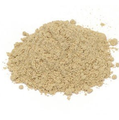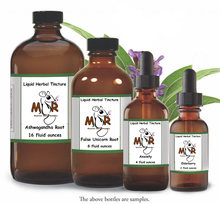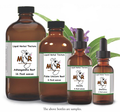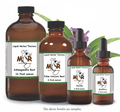 Loading... Please wait...
Loading... Please wait...- Home
- Bulk Herbs
- Herbs (G-H)
- Goats Rue Tincture
- Home
- Herbs - Organically Grown & Wild Crafted USA
- G-I
- Goats Rue Tincture
Product Description
Goats Rue Tincture
Also Known As -Galega officinalis
Origin: Wild Crafted/Our Galega officinalis is considered a noxious weed here in Washington State and we wild harvest on the riverbank of the Nisqually River at the base of Mt. Rainier. Our Galega officinalis is light green and not brownish grey.
Overview - Goats rue is native to Europe and the east coast of North America, although it has been found as far east as Japan. It grows in most soil types. In some places, it is considered invasive. The plant grows spikes of pea-like flowers that range in color from white to lavender. There may be up to 200 flowers per plant. The plant will fix nitrogen into the soil, which can benefit plants growing nearby. This herb has been used medicinally since at least the Middle Ages, and was used at that time to treat the plague.
Medicinal Uses - Goat's rue is used to treat intestinal worms, relieve fevers and to cure snakebite. It helps nursing mothers increase milk production. It also has potential as a treatment for diabetes, as it lowers blood sugar levels. While it is not used instead of normal diabetic remedies, it is recommended in the early stages to help control symptoms. It is also diuretic. Native Americans used this herbal remedy as an aphrodisiac and to treat impotency. They also used it to restore health and beauty to women.
Other Uses – Goat's rue was first used to increase milk production in goats and cattle. It also has a compound in it that is a natural cheese rennet and will clot milk for the cheese-making process. It has also been used as fodder for livestock. It was once used as a shampoo to prevent loss of hair. The root of the plant is the source of the insecticide "rotenone" that is often used against flying insects.
Herbs to Combine/Supplement - Goat's rue can be combined with fenugreek to make a formula to lower blood sugar.
Parts Used - Flowers, leaves, seeds, stem – The flower, leaf, seed and stem are all used from the plant.
Precautions - Goat's rue may interact with diabetes medications that control blood sugar, so do not take it at the same time without your physician's knowledge.
Features and description:
- NON GMO!
- Gluten Free!
- Highest Strength Goat's Rue tincture!
- Acai liquid extract contains ONLY natural ingredients!
- High Quality Goat's Rue tincture - we use classic conventional methods of extraction! We meticulously produce our extracts according to precise standards where each herb is extracted according to the distinct characteristic of each plant!
- Super concentrated Goat's Rue: dried material / solvents ratio is 1:3!
- We only use Only Certified Organic or ethically sourced wild harvested raw material, organic grade alcohol, and do not add water!
Ingredients: Goat's Rue and Certified Grain Alcohol in a 2 or 4 fl oz amber bottle.
Suggested: 10-20 drops can be taken 2-3 times per day. Put drops in juice or water, under the tongue or as directed by your practitioner. May be taken 3 times daily. Shake well. Store in cool dark place. Keep out of reach of children.
Diabetes: Information is lacking to provide dosing recommendations for goat’s rue in diabetes. Clinical dosing information focuses on metformin, which is derived from goat’s rue. There is some information on clinical trial that suggest a dosage if 1-2 tsp (infusion) twice a day. Do not take this herb with diabetes medications it may interact with your prescription. Consult with your physician prior to use.
Disclaimer -These products are not intended to diagnose, treat cure or prevent any disease. Reviews are not intended as a substitute for appropriate medical care or the advice of a physician or another medical professional. Actual results may vary among users. Mountain Maus Remedies LLC makes no warranty or representation, expressed or implied, as to the accuracy or validity of the information contributed by outside product review submissions, and assumes no responsibility or liability regarding the use of such information. The information and statements regarding the dietary supplements have not been evaluated by the Food and Drug Administration. If you have a medical condition or disease, please talk to your health care provider. If you are currently taking a prescription medication, you should work with your health care provider before discontinuing any drug or altering any drug regimen, including augmenting your regimen with any herb or dietary supplements. Do not attempt to self-diagnose any disease or ailment based on the reviews and do not use the information contained herein for diagnosing or treating a health problem or disease. Proper medical care is critical to good health. If you have a health concern or suspect you have an undiagnosed sign or symptom, please consult a physician or health care practitioner.
















